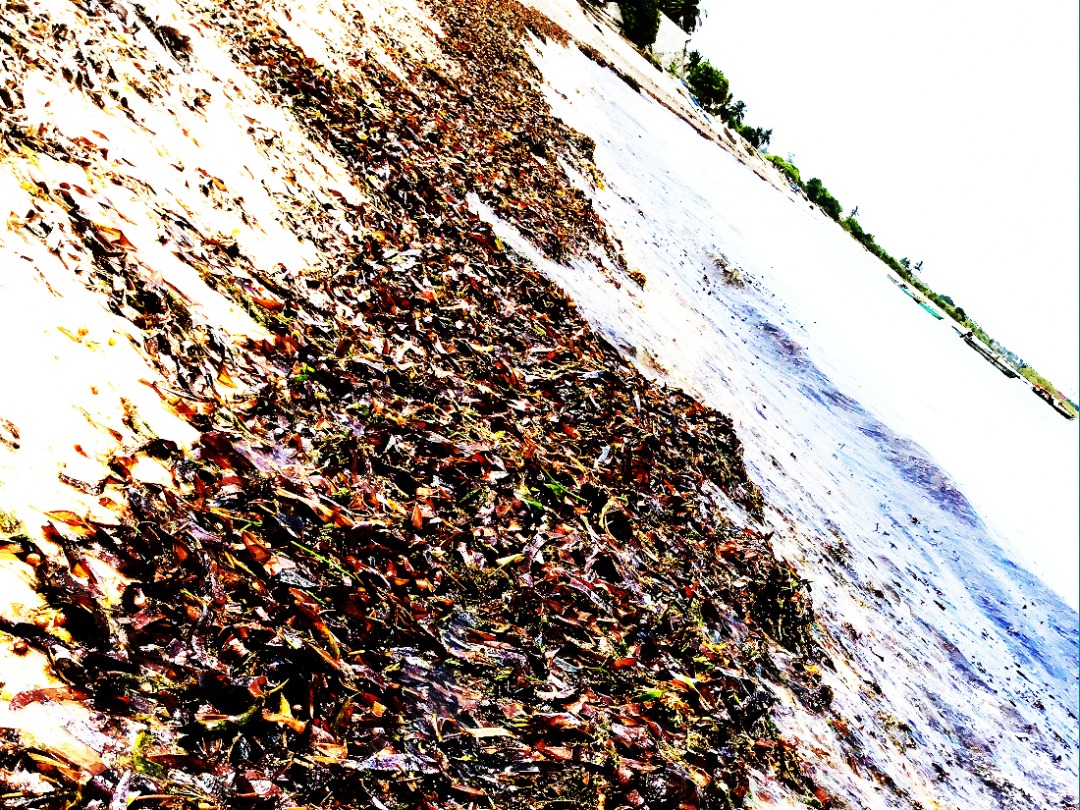Seagrass occupy a relatively small area of the coastal oceans (~ 0.1- 0.2%) (Duarte et al 2002) and yet, they play a large role in the coastal zone by providing several important ecosystem goods and services. Seagrass meadows supply food to mega-herbivores such as dugongs, sea turtles, sea urchins, manatees, water birds and herbivorous fish.
They provide breeding nurseries and feeding grounds to migratory and stationary fish and to other invertebrate organisms. They provide habitat and food to marine endangered spp in Tanzania like dugongs and sea turtles as reported by UNEP. Seagrasses are also ecosystem engineers, in the sense that they significantly modify the abiotic environment of their ecosystem. For instance, seagrass leaves reduce hydrodynamic stress by attenuating currents and waves, improve light conditions by trapping suspended sediment and nutrients and increases pH by absorbing CO2 creating favorable habitat to carbonate-associated organisms, their ability to sequestrate carbon makes them an important carbon sink and lungs of the ocean (Liberatus Lymo et al 2016).
The cause of seagrass deterioration
More than half of the seagrass cover has been lost since 1977. This is due to numerous anthropogenic pressures that threaten the existence of seagrass beds. Most findings reports that pollutions, coastal developments and boat anchoring have for decades been the major cause of seagrass loss in many areas including the Indian Ocean. It’s approximated that every day more than 1000s of seagrasses are dying and drawn away from the ocean with this rate of seagrass death increasing there is a possibility of losing seagrass beds completely in the next 10 years if no actions are taken.
A decade loss of sea cow
The dugongs in Tanzania may now be functionally extinct in Tanzania with just a handful of individuals left in the Rufuji Delta area. The interviews with fishers in 2002/3 in 57 villages along Tanzanian coast produced just 32 records, of which 8 were live animals and 24 were accidental net captures, the majority occurred in the southern part of the Rufiji Delta around Mohoro Bay were occasionally group of 3-5 were seen in July and august.
Since 2015 only few individuals has been seen. Dugongs have been extensively hunted for their meat and they’re usually killed if encountered. With the spp now so rare, there is little active hunting and the greater threats are entanglement in fishing nets and loss of seagrass habitat. Sea cow highly depends on seagrass beds for food. The decline of seagrass makes them to migrate and die in a long search for food. It’s sadly probable that the dugong will be extinct in Tanzania in the next couple of years.
Endangered sea turtle
Five species of marine turtles occur in Tanzania’s waters. These includes green, hawksbill, loggerhead, olive ridley and leatherback. Two species; green and hawksbill are all categorized by IUCN as endangered or critically endangered. Population are declining as a result of seagrass habitat destruction and alteration, overexploitation for meat and eggs and incidental capture in gillnets and trawlers.
Although conservation and management efforts are underway in some areas of Tanzania including the Zanzibar islands of Unguja and Pemba, and Mafia, Bagamoyo, Temeke, Mkuranga and Mtwara districts on the mainland the conservation status of turtles in Tanzania remains largely unknown. Information concerning population dynamics is incomplete while knowledge of nesting populations and feeding habitats is patchy and of developmental habitats almost non-existent as reported by WWF
Sea turtles largely depends on seagrass for food, the destruction of seagrass can create even larger pressure to these endangered marine spp causing them to extinct completely in the Tanzanian ocean waters.
Actions to conserve seagrass and life below waters
Seagrass needs our attention and immediate response to conserve and restore them for them to keep supporting the marine life and the life of the endangered marine spp in Tanzania. Sustainable Ocean Alliance Tanzania (SOA TANZANIA) have been working hard to monitor and restore the seagrass beds in Tanzania with the hope of restoring and conserving more than 10 hectares of the seagrass cover in Tanzania coastline. we recommends for a joint efforts among stakeholders, scientists, coastal communities and the government in conserving the seagrass ecosystem and the ocean a large, this joint force could help more to achieve the 30 by 30 conservation action force for our seagrasses in Tanzania.
Article by Ailars David | SOA Tanzania Hub Lead
References
Duarte CM (2002) The future of seagrass meadows. Environmental Conservation 29: 192-206
Liberatus D Lymo (2016) carbon sequestration processes in Tropical seagrass beds. ISBN 978-91-7649-369-4 .Department of Ecology, Environment and Plant Sciences, Stockholm University
Chumbe island hand book on marine animals
wwf.panda.org/statusofseaturtlesintanzania/
